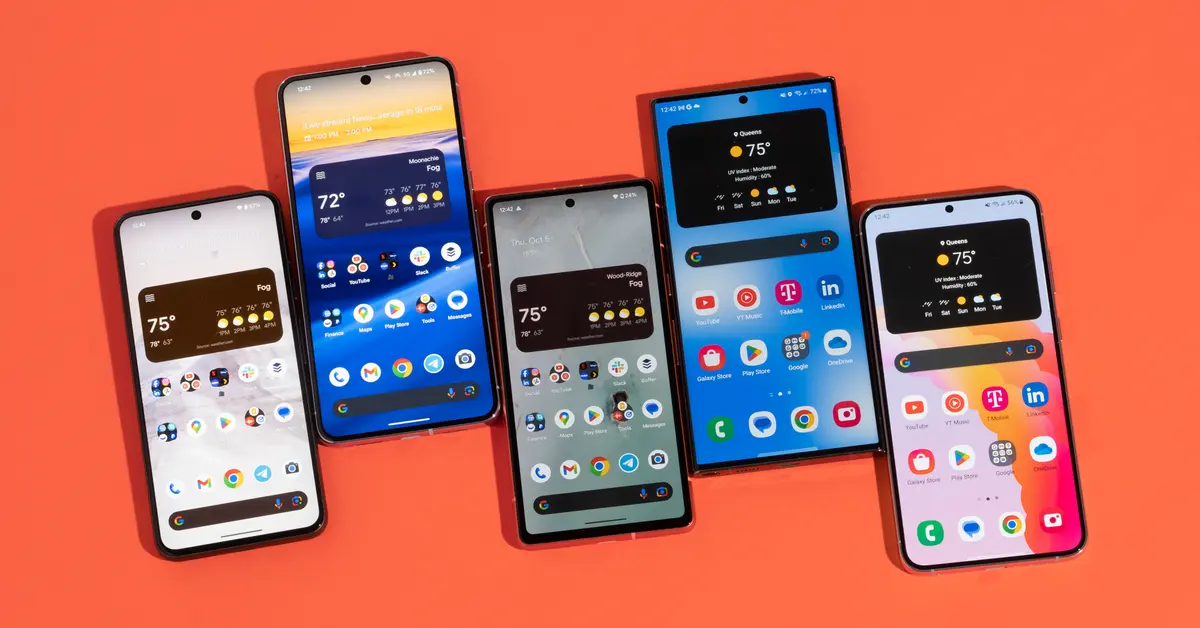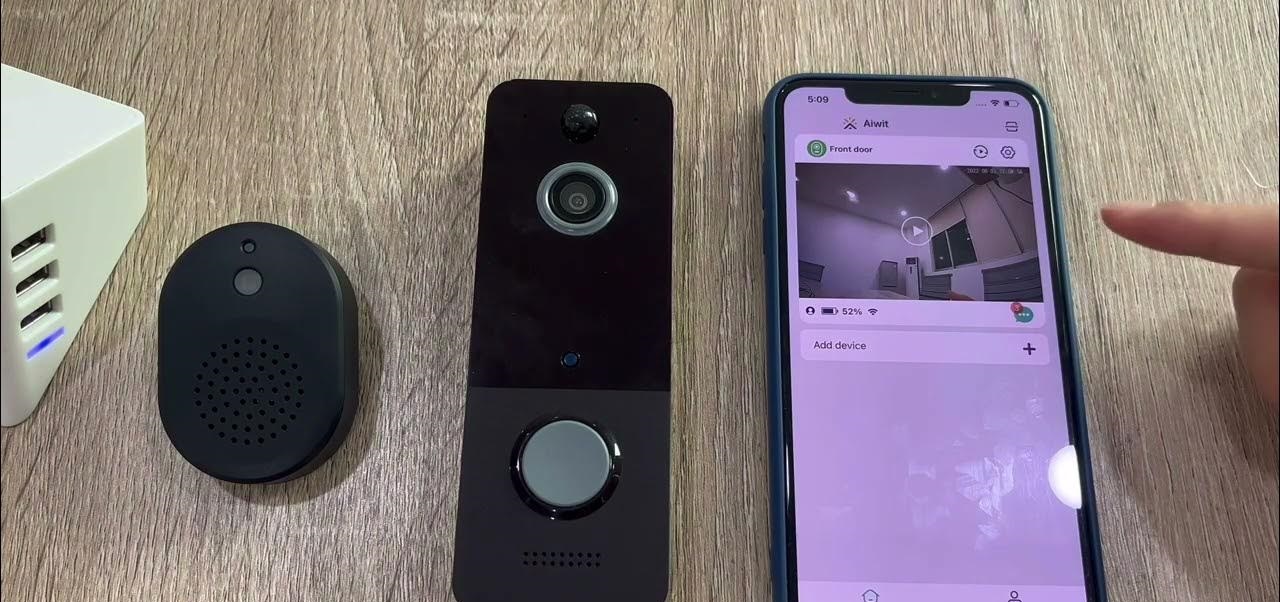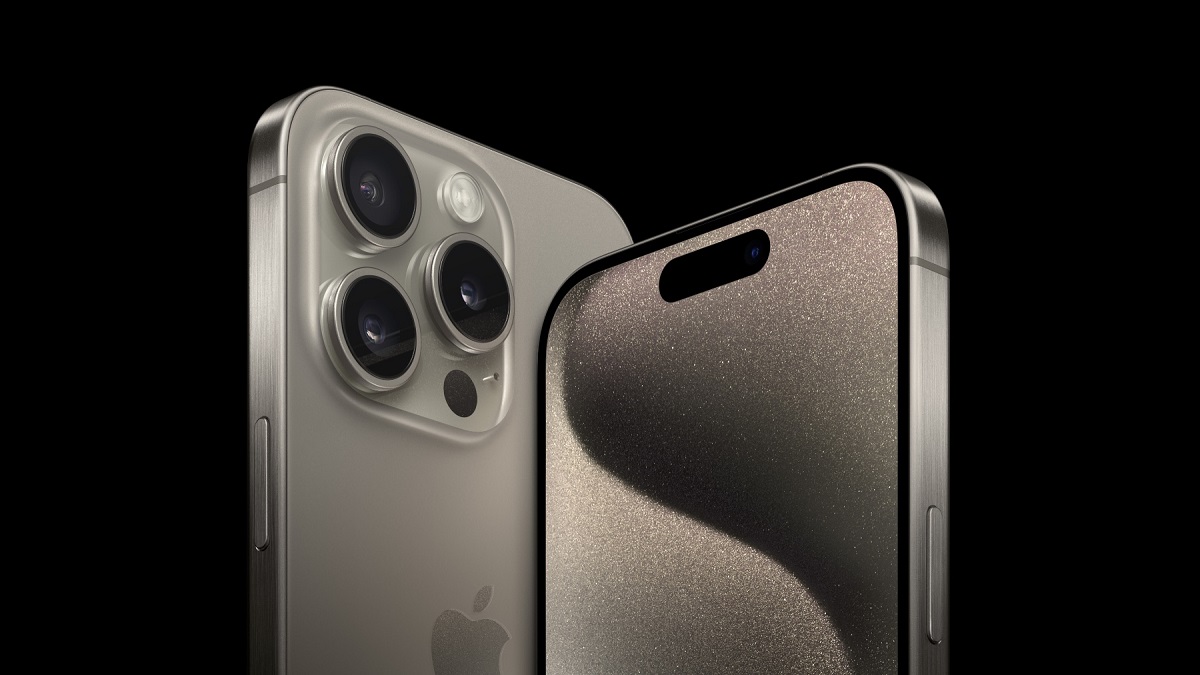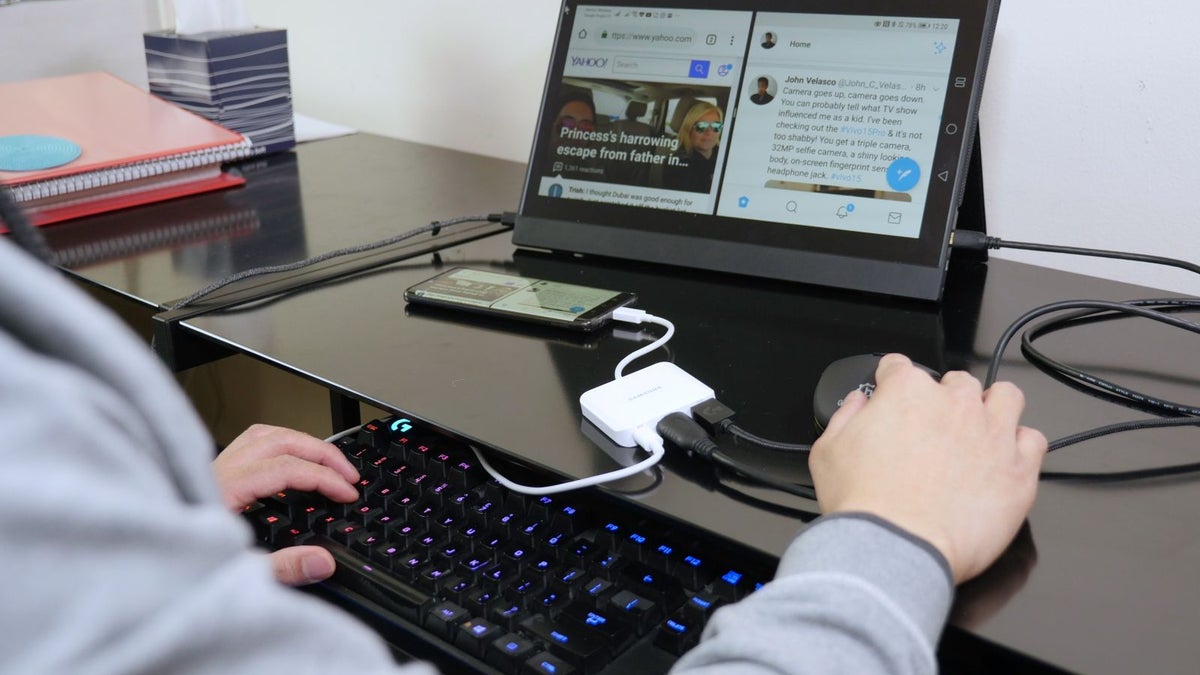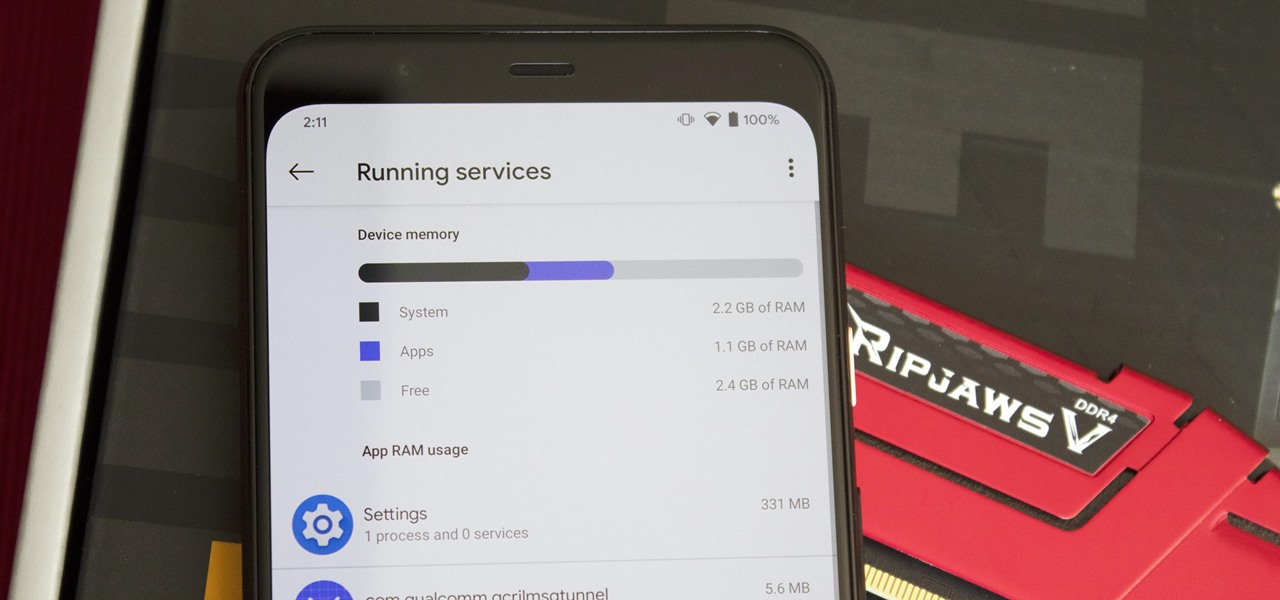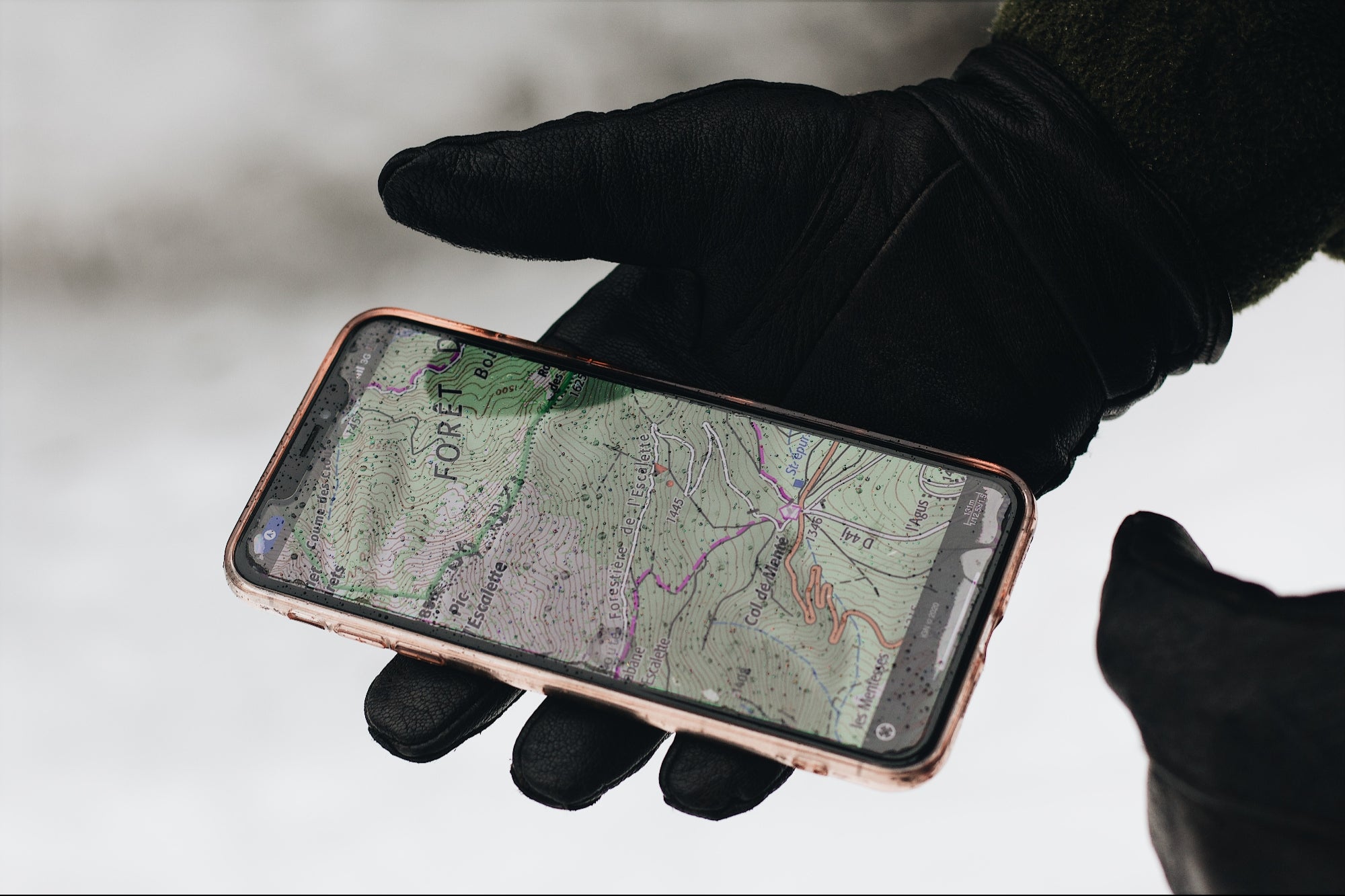Introduction
Welcome to our comprehensive guide on how to monitor another phone for free. In today’s digital age, the ability to monitor and track a loved one’s activities on their phone has become increasingly important. Whether you’re a concerned parent trying to ensure your child’s safety, an employer looking to protect your company’s confidential information, or an individual wanting to keep an eye on a partner’s activities, monitoring another phone can provide you with valuable insights.
With the advancement of technology and the availability of monitoring apps, it has become easier than ever to keep tabs on someone’s phone activities. From tracking text messages and phone calls to monitoring social media and GPS location, there are many features and functionalities that these apps offer. However, it is important to note that while monitoring someone else’s phone can have legitimate reasons, there are legal considerations and ethical boundaries that need to be respected.
In this guide, we will walk you through the process of choosing a monitoring app, installing it on the target device, and utilizing its various features. We will also discuss the importance of respecting privacy and legal boundaries when monitoring another phone.
Before we delve into the technical aspects of monitoring, it’s important to understand why someone would want to monitor another phone in the first place. Let’s explore some of the common reasons people may have for wanting to monitor a phone:
Reasons to Monitor Another Phone
There are various reasons why someone may feel the need to monitor another phone. It is important to remember that each situation is unique, and the decision to monitor should always be made with respect for privacy and legal boundaries. Here are some common reasons people may have for monitoring another phone:
1. Parental Concerns: Parents often monitor their child’s phone to ensure their safety and protect them from cyber threats. By monitoring their calls, messages, and online activities, parents can detect any signs of bullying, inappropriate content, or potential danger.
2. Employee Monitoring: In some cases, employers may monitor company-owned phones to protect sensitive data and ensure employees are using company resources responsibly. This can help prevent leaks of confidential information or misuse of company-owned devices.
3. Trust Issues: Monitoring a partner’s phone can arise from trust issues within a relationship. While this can be a delicate matter, some couples may choose to monitor each other’s activities to rebuild trust or address suspicions of infidelity.
4. Lost or Stolen Phone: In the unfortunate event that a phone is lost or stolen, being able to monitor its location can be crucial in recovering it. Many monitoring apps offer GPS tracking features that can help locate a lost or stolen device.
5. Personal Security: People may choose to monitor their own phone for personal security reasons. This can include tracking their own location, monitoring their online presence, and protecting their personal information from unauthorized access.
It is important to note that regardless of the reason for monitoring another phone, it should always be done within the confines of the law and with the consent of the person being monitored (if applicable). Respecting privacy and open communication are vital in maintaining trust and ethical boundaries.
In the next section, we will discuss the legal considerations that need to be taken into account when monitoring another phone.
Legal Considerations
When it comes to monitoring another phone, it is crucial to understand and abide by the legal requirements and regulations in your jurisdiction. While the laws regarding phone monitoring can vary from one country or state to another, there are some common legal considerations to keep in mind:
1. Consent: In many jurisdictions, it is illegal to monitor someone’s phone without their knowledge and consent. It is important to obtain proper consent from the person you are monitoring, especially if they are not a minor or an employee under your supervision.
2. Parental Rights: Parents may have the right to monitor their minor child’s phone activities, as they are legally responsible for their well-being. However, it is essential to familiarize yourself with the specific laws in your jurisdiction to ensure you are within your legal rights.
3. Employee Monitoring: If you are an employer monitoring company-owned phones used by your employees, it is important to clearly communicate your monitoring policies and obtain written consent. Additionally, it is advisable to consult legal counsel to ensure compliance with applicable employment laws.
4. Privacy Laws: Many jurisdictions have privacy laws in place that protect individuals’ right to privacy. These laws may restrict the extent to which you can monitor someone’s phone activities, particularly when it comes to private conversations and personal information.
5. Cybercrime and Unauthorized Access: Unlawful interception of someone’s phone communications or unauthorized access to their personal accounts can be deemed illegal and punishable by law. It is important to be aware of the cybercrime laws in your jurisdiction to avoid any legal repercussions.
Remember, this section is not intended as legal advice, and it is essential to consult with a legal professional to fully understand the legal implications and requirements related to monitoring another phone in your specific situation.
In the next section, we will discuss the process of choosing a monitoring app that aligns with your needs and requirements.
How to Choose a Monitoring App
Choosing the right monitoring app is crucial to ensure that it meets your needs and provides the necessary features for efficient phone monitoring. With a wide range of options available in the market, here are some factors to consider when selecting a monitoring app:
1. Compatibility: Ensure that the monitoring app you choose is compatible with the target phone’s operating system (OS). Whether it is iOS or Android, verify that the app supports the specific OS version to ensure smooth installation and optimal performance.
2. Features: Assess the features provided by the monitoring app. Consider which features are essential for your monitoring needs, such as text message tracking, call monitoring, social media monitoring, GPS tracking, and more. Choose an app that offers the functionality you require.
3. User-Friendliness: Look for a monitoring app that is user-friendly and easy to navigate. The app should have a clear and intuitive interface, allowing you to access the monitored data effortlessly and efficiently.
4. Stealth Mode: Depending on your monitoring requirements, you may prefer an app that operates in stealth mode. This means the app runs discreetly in the background without notifying the user of the target phone that they are being monitored.
5. Reliability: Read reviews and evaluate the reputation of the monitoring app before making a decision. Look for apps that have a proven track record of reliability and performance to ensure that you get accurate and up-to-date information.
6. Customer Support: Consider the level of customer support offered by the monitoring app provider. A reliable and accessible customer support team can assist you in case of any technical issues or questions that may arise during installation or usage.
7. Price: Compare the pricing plans and packages offered by different monitoring app providers. Take into account the features included and the duration of the subscription. Remember to choose a reputable app that offers good value for money.
Remember to research and compare different monitoring apps to find the one that best meets your specific needs and requirements. It is important to prioritize the features that are most relevant to you and choose an app that aligns with your goals.
In the next section, we will guide you through the process of installing a monitoring app on the target device.
Installing a Monitoring App
Installing a monitoring app on the target device is a crucial step in the phone monitoring process. Follow these general steps to install a monitoring app:
1. Choose the Right App: Based on your research and requirements, select a monitoring app that is suitable for the target phone’s operating system (iOS or Android). Ensure that the app is compatible with the device and offers the features you need.
2. Purchase and Download the App: Visit the official website of the monitoring app and purchase the subscription or license that suits your needs. Follow the instructions to download the app. Some apps may require you to create an account during this process.
3. Enable Unknown Sources: If you are installing the app on an Android device, you may need to enable “Unknown Sources” in the device’s settings. This is necessary to allow the installation of apps from sources other than the Google Play Store.
4. Install the App: Open the downloaded monitoring app file on the target device and follow the on-screen prompts to complete the installation process. You may need to grant various permissions and provide the necessary access to the app.
5. Authenticate and Configure: Once the app is successfully installed, open it on the target device and authenticate yourself using your account credentials. Some apps may require you to enter a unique license key or activation code during this step. Follow the instructions provided by the app to complete the configuration process.
6. Hide or Customize: Depending on the monitoring app and your preferences, you may have the option to hide the app icon or customize its appearance on the target device. This can help maintain the stealthiness of the monitoring process.
7. Verify and Test: After the installation and configuration are complete, verify that the app is working correctly by monitoring a few test activities, such as sending a text message or making a phone call. Check if the monitored data is being accurately recorded and reported to your monitoring app’s control panel.
It is crucial to note that the installation process may vary depending on the monitoring app and the target device’s specific requirements. Always follow the instructions provided by the app’s official documentation or support team to ensure a successful installation.
In the next sections, we will explore various features and functionalities offered by monitoring apps, including text message monitoring, call tracking, social media activity, GPS location tracking, and more.
Monitoring Text Messages
One of the key features of monitoring apps is the ability to track and monitor text messages on the target device. Text message monitoring can provide valuable insights into the communication and interactions of the person you are monitoring. Here’s how it works:
1. Message Content: Monitoring apps allow you to access the content of both incoming and outgoing text messages. You can view the actual text and any attachments, such as photos or videos, that are sent or received through SMS or messaging apps.
2. Contact Information: Monitoring apps also provide details about the sender or recipient of the text messages, including their phone number or contact name. This allows you to identify who the person is communicating with.
3. Timestamps: Timestamps are crucial for tracking the date and time of each message. Monitoring apps record and display this information, giving you a timeline of when the messages were sent or received.
4. Deleted Messages: Some monitoring apps offer the ability to retrieve deleted text messages. This can be useful if you suspect that certain messages have been deleted to hide evidence or information. However, it is important to note that not all apps provide this feature.
5. Instant Messaging Apps: In addition to traditional SMS, monitoring apps often support popular instant messaging apps like WhatsApp, Facebook Messenger, Snapchat, and more. This allows you to monitor the conversations and media shared through these platforms.
When it comes to text message monitoring, it is essential to use this feature responsibly and in compliance with applicable laws. Respect individual privacy rights, and only monitor text messages when you have a lawful and legitimate reason to do so.
As with any monitored activity, it is crucial to maintain open communication and transparency when using text message monitoring. Keep in mind that trust and respect are vital in any personal or professional relationship.
In the next section, we will discuss another important aspect of phone monitoring – tracking phone calls.
Tracking Phone Calls
Monitoring apps offer the ability to track and monitor phone calls made on the target device. This feature allows you to gather information about incoming and outgoing calls, including the callers’ identities, call duration, and timestamps. Here’s how phone call tracking works:
1. Call Logs: Monitoring apps provide access to the call logs on the target device. This includes details such as the phone numbers or contact names of the callers, call duration, and timestamps. You can see a complete record of incoming and outgoing calls.
2. Caller Identification: The monitoring app can display the caller’s identity, including their phone number or contact name if it is stored in the target device’s contacts. This helps you identify who is calling or being called by the person you are monitoring.
3. Call Duration: You can view the duration of each call, giving you an idea of how long the person is communicating with specific contacts. This information can be useful in understanding the level of interaction and frequency of communication.
4. Timestamps: Monitoring apps record the timestamps of each call, allowing you to see when the calls were made or received. This information can help establish patterns or identify any suspicious or unusual call activity.
5. Missed Calls: In addition to tracking answered calls, monitoring apps also provide information about any missed calls on the target device. This allows you to see if the person you are monitoring is receiving calls and not answering them.
It is important to note that monitoring someone’s phone calls without their knowledge or consent may be illegal in certain jurisdictions. Always ensure that you are complying with the applicable laws and regulations regarding call monitoring.
Furthermore, respect privacy boundaries and use this feature responsibly. Phone call tracking should be used for legitimate purposes, such as parental monitoring or employee management, and not for unauthorized or malicious intent.
In the next section, we will explore how monitoring apps can provide insights into social media activity on the target device.
Accessing Social Media Activity
Monitoring apps are designed to provide access to the social media activity on the target device. This feature allows you to keep tabs on the person’s interactions, posts, and messages across various social media platforms. Here’s how you can access social media activity using a monitoring app:
1. Supported Platforms: Monitoring apps typically support popular social media platforms such as Facebook, Instagram, Twitter, Snapchat, WhatsApp, and more. Verify that the app you choose supports the specific platforms you want to monitor.
2. Messages and Chats: Monitoring apps can retrieve and display conversations and messages sent or received through social media platforms. You can view the content of the messages, as well as the identities of the senders and recipients.
3. Photos and Videos: Social media monitoring also provides access to the photos and videos shared on these platforms. You can see the media files posted or received by the person you are monitoring, giving you insight into their online activities and interactions.
4. Timeline and Feed: Some monitoring apps allow you to view the person’s social media timeline or feed. This gives you a comprehensive overview of their posts, likes, comments, and shared content, helping you understand their online presence and engagement.
5. Activity Insights: Monitoring apps may provide additional insights into the person’s social media activity, such as the frequency of posts, the types of content shared, and the profiles they interact with the most. These insights can give you a deeper understanding of their online behavior.
It is important to note that accessing someone’s social media activity without their consent or in violation of their privacy rights may have legal implications. Always ensure that you are complying with applicable laws and regulations regarding social media monitoring.
Additionally, while social media monitoring can be a valuable tool, it is crucial to use it responsibly and respect privacy boundaries. Communication and trust are key in any relationship, and open dialogue regarding monitoring practices can help maintain healthy connections.
In the next section, we will explore another essential feature of monitoring apps – GPS location tracking.
Monitoring GPS Location
Monitoring apps often offer GPS location tracking as a key feature, allowing you to keep tabs on the whereabouts of the target device. GPS location tracking can be useful for various purposes, such as ensuring the safety of loved ones or tracking the location of company-owned devices. Here’s how GPS location monitoring works:
1. Real-Time Tracking: Monitoring apps use the GPS functionality of the target device to provide real-time updates on its location. You can view the device’s current whereabouts through the app’s control panel or dashboard.
2. Location History: In addition to real-time tracking, some monitoring apps also keep a record of the device’s location history. This allows you to view the places the person has been and the routes they have taken over a specified period.
3. Geofencing: Geofencing is a feature offered by some monitoring apps that allows you to set virtual boundaries on a map. When the target device enters or exits these boundaries, you receive an alert or notification. This can be useful for keeping track of specific locations, such as home, school, or work.
4. Accuracy: The accuracy of GPS location tracking varies depending on several factors, including the availability of GPS signals, the device’s connection strength, and the surrounding environment. It is important to consider these factors when interpreting the location data provided by the monitoring app.
5. Privacy and Consent: It is crucial to obtain consent from the person being monitored before implementing GPS location tracking. Respect their privacy rights and engage in open communication to ensure mutual understanding and trust.
GPS location monitoring can be a helpful tool in various scenarios, including ensuring the safety of children or tracking the whereabouts of employees during work hours. However, it is important to balance the use of this feature with privacy considerations and legal obligations.
In the next section, we will explore another feature offered by some monitoring apps – recording phone calls.
Recording Phone Calls
Some monitoring apps offer the ability to record phone calls on the target device. This feature can be valuable in certain situations, such as gathering evidence or ensuring compliance with company policies. Here’s how phone call recording works:
1. Call Recording Functionality: Monitoring apps with call recording capabilities allow you to record incoming and outgoing phone calls made on the target device. The app captures both sides of the conversation and saves them as audio files.
2. Automatic or Manual Recording: Depending on the app’s settings, call recording can be automatic or require manual activation. Automatic call recording records all calls by default, while manual recording allows you to selectively record specific calls.
3. Call Recording Storage: The recorded phone calls are typically saved within the monitoring app’s control panel or dashboard. You can access these recordings remotely and download them to listen to at your convenience.
4. Legal Considerations: It is important to be aware of and comply with the legal requirements regarding call recording in your jurisdiction. Some regions require consent from all parties involved in the conversation, while others may impose stricter regulations or even prohibit call recording altogether.
5. Ethical Use: Call recording should be used responsibly and ethically. It is important to respect privacy and only use call recording when there is a legitimate and lawful reason, such as parental monitoring or documenting work-related conversations.
While call recording can have benefits, it is crucial to understand and abide by the legal and ethical considerations associated with this feature. Always ensure that you are aware of and comply with the laws and regulations in your jurisdiction regarding call recording.
Additionally, open and transparent communication is essential, particularly in professional contexts where call recording may be implemented. Inform all parties involved in the conversation of the potential for call recording to maintain trust and comply with legal and ethical obligations.
In the next section, we will explore how monitoring apps provide access to photos and videos on the target device.
Accessing Photos and Videos
Monitoring apps often provide the ability to access photos and videos stored on the target device. This feature allows you to view the multimedia files captured or downloaded on the device, providing insight into the person’s visual content. Here’s how you can access photos and videos using a monitoring app:
1. Viewing Media Files: Monitoring apps allow you to view the photos and videos stored on the target device. You can access the media files directly from the app’s control panel or dashboard, making it easy to browse through the visual content.
2. Thumbnail Previews: In addition to viewing media files, some monitoring apps provide thumbnail previews of the photos and videos. This gives you a quick glimpse of the content without having to open each file individually.
3. Metadata Information: Monitoring apps may also retrieve and display metadata information associated with photos and videos. This can include details such as the date and time the media was taken or created, GPS location information, and even information regarding the device’s camera settings.
4. Download and Storage: Depending on the app and its capabilities, you may have the option to download and store the media files on your own device. This can be useful for preserving evidence or documenting specific content of interest.
5. Social Media Media: Besides accessing photos and videos directly stored on the device, some monitoring apps also allow you to monitor the media shared on social media platforms. This includes photos and videos shared on platforms like Facebook, Instagram, Snapchat, and more.
It is crucial to use this feature responsibly and respect privacy boundaries. Accessing someone’s photos and videos without their consent may violate their privacy rights and may even be illegal in certain jurisdictions. Always ensure that you are complying with applicable laws and regulations when monitoring visual content.
Additionally, maintaining open and transparent communication is essential, particularly when monitoring visual media. Engage in honest conversations and establish trust with the person you are monitoring, especially if they are your child or an employee, to foster a healthy and respectful monitoring relationship.
In the next section, we will discuss the remote control features offered by some monitoring apps.
Remote Control Features
Some monitoring apps offer remote control features that allow you to have additional control over the target device, enhancing the monitoring experience. These features provide the ability to remotely manage certain functions and settings of the device. Here are some common remote control features offered by monitoring apps:
1. Remote Locking: With remote locking, you can lock the target device remotely using the monitoring app’s control panel. This feature is particularly useful if the device is lost or stolen, as it helps secure the data and prevent unauthorized access.
2. Remote Wiping: In the event that the device is lost or stolen, remote wiping allows you to erase all data and restore the device to its factory settings. This feature ensures that sensitive information remains safe and protected from potential misuse.
3. App Blocking: Monitoring apps may provide the ability to block or restrict access to specific apps on the target device. This can be helpful for parental control purposes or to limit distractions in an employee’s work environment.
4. Web Filtering: Some monitoring apps offer web filtering capabilities, allowing you to block specific websites or categories of websites on the target device. This helps protect against accessing inappropriate or harmful content.
5. Remote Alarm: The remote alarm feature allows you to trigger an audible alarm on the target device remotely. This can be beneficial if you need to locate a misplaced device or alert someone to its presence.
It is important to note that while remote control features can be valuable, they should be used responsibly and ethically. Respect personal privacy and use these features in compliance with applicable laws and regulations.
In addition, open communication is crucial, especially when implementing remote control features on a device that belongs to your child or is used by your employees. Engage in discussions about device usage, expectations, and boundaries to maintain a healthy monitoring dynamic.
In the next section, we will explore how monitoring apps can provide insights into the internet browsing history on the target device.
Monitoring Internet Browsing History
Monitoring apps offer the ability to access and monitor the internet browsing history on the target device. This feature allows you to view the websites visited, search queries made, and other online activities. Here’s how monitoring internet browsing history works:
1. Browsing History Tracking: Monitoring apps capture and record the URLs of the websites visited on the target device. This provides you with a comprehensive list of the websites that have been accessed using the device’s web browser.
2. Search Queries: In addition to browsing history, some monitoring apps also capture the search queries made on search engines. This allows you to see what terms or topics have been searched for, providing further insight into the person’s online interests.
3. Timestamps: Monitoring apps record the timestamps of each website visit and search query. This allows you to see when these activities took place, giving you a timeline of the person’s browsing behavior.
4. Favorites and Bookmarks: Some monitoring apps may provide access to the favorites or bookmarked websites on the target device. This feature allows you to see the websites the person has marked for easy access or frequent reference.
5. Notification of Restricted Websites: If you have implemented web filtering or blocking on the target device, some monitoring apps can notify you when the person attempts to access a restricted or blocked website. This helps you keep tabs on their online activities and enforce internet usage policies.
Monitoring internet browsing history can be useful for various purposes, such as keeping track of your child’s online activities or monitoring employee internet usage. However, it is important to balance the use of this feature with respect for privacy and compliance with applicable laws and regulations.
Additionally, open communication is crucial in maintaining a healthy monitoring relationship. Discuss internet usage expectations, safe browsing habits, and the reasons behind monitoring internet browsing history to ensure transparency and trust.
In the next section, we will explore the importance of blocking inappropriate content using monitoring apps.
Blocking Inappropriate Content
Monitoring apps offer the functionality to block inappropriate content on the target device, providing a safer online environment, particularly for children. This feature allows you to restrict access to websites, apps, or specific types of content that may be deemed inappropriate or harmful. Here’s how blocking inappropriate content works:
1. Web Filtering: Monitoring apps with web filtering capabilities allow you to block specific websites or categories of websites on the target device. You can create custom blacklists or utilize predefined filters to restrict access to certain types of content, such as adult content, violence, or gambling sites.
2. App Blocking: Some monitoring apps provide the ability to block or restrict access to specific apps on the device. This can be useful in preventing access to social media platforms, messaging apps, or other applications that may have age-inappropriate or excessive content consumption.
3. Keyword Filtering: Monitoring apps may also offer keyword filtering, where you can specify certain keywords or phrases that, when detected, trigger content blocking. This feature allows you to block content related to specific topics or themes that you deem inappropriate or undesirable.
4. Customization and Whitelisting: Many monitoring apps allow for customization, giving you the flexibility to create whitelists of approved websites or apps that can be accessed without restrictions. This ensures that access to educational or trusted content is not inadvertently blocked.
5. Real-Time Monitoring and Alerts: Some monitoring apps provide real-time monitoring of website or app access attempts, alerting you if any blocked content is being accessed or if attempts to access blocked content are made. This allows you to stay informed and take appropriate action if necessary.
Blocking inappropriate content is an essential feature, particularly when it comes to protecting children from potentially harmful or unsuitable online material. However, it is important to strike a balance and apply appropriate restrictions while still allowing for age-appropriate and educational content access.
Open communication is vital in implementing content blocking. Discuss the reasons behind blocking inappropriate content, explain the importance of online safety, and involve children in decision-making to foster understanding and cooperation.
In the next section, we will explore the options for remotely locking or wiping the target device using monitoring apps.
Remotely Locking or Wiping the Phone
Monitoring apps often provide the option to remotely lock or wipe the target device in certain situations, such as when the device is lost, stolen, or compromised. These features offer an additional layer of protection to safeguard data and ensure privacy. Here’s how remotely locking or wiping the phone works:
1. Remote Locking: With remote locking, you can lock the target device remotely using the monitoring app’s control panel or dashboard. This feature comes in handy when you want to prevent unauthorized access to the device’s data or applications. It can be particularly useful if the device is lost or stolen to secure personal or sensitive information.
2. Remote Wiping: In situations where you are unable to recover the lost or stolen device, remote wiping allows you to erase all data on the target device remotely. This feature ensures that personal information, contacts, messages, and any other stored data are irretrievable. By initiating a remote wipe, you can protect sensitive information from falling into the wrong hands.
3. Activation and Confirmation: To remotely lock or wipe the phone, you typically need to access the monitoring app’s control panel or dashboard. From there, you can locate the device and select the appropriate action, such as locking or wiping. Depending on the app and its settings, you might need to provide confirmation or passcode verification to prevent accidental locking or wiping.
4. Recovery Options: Some monitoring apps offer additional recovery options after remotely locking or wiping the phone. This may include the ability to unlock the device with a preset passcode, track its location, or display a customized message on the lock screen with instructions for returning the device.
It is important to note that remotely locking or wiping the phone should be used as a last resort, particularly when dealing with a lost or stolen device. Always consider attempting to locate or recover the device first, and contact the appropriate authorities if necessary.
Additionally, it is crucial to balance the use of these features with legal and ethical considerations. Ensure that you are in compliance with applicable laws regarding remote locking or wiping, and respect privacy boundaries as you take actions to protect the device and its data.
In the next section, we will discuss pricing and payment options for monitoring apps.
Monitoring App Pricing and Payment Options
Monitoring apps typically offer various pricing plans and payment options to cater to different needs and budgets. Understanding the pricing structure and available payment options is essential when selecting a monitoring app. Here’s what you need to know:
1. Pricing Plans: Monitoring apps often provide different pricing plans that vary in terms of features, duration, and level of customer support. Common plans include monthly, quarterly, and annual subscriptions. Consider your monitoring needs and budget to choose a plan that aligns with your requirements.
2. Free Trials: Some monitoring apps offer free trial periods, allowing you to experience the app’s features and functionalities before committing to a paid subscription. Take advantage of free trials to assess whether the app meets your monitoring needs.
3. Bundle Deals: Keep an eye out for bundle deals or special offers that monitoring app providers may offer. These deals may include discounted pricing or additional features bundled with the subscription, providing better value for your money.
4. Payment Options: Monitoring apps usually support various payment methods, such as credit cards, debit cards, and PayPal. Check the app’s website or contact their customer support to confirm the available payment options and choose the one that is most convenient for you.
5. Renewals and Cancellations: Be aware of the app’s renewal and cancellation policies. Some monitoring apps automatically renew subscriptions at the end of the billing cycle, while others require manual renewal. Likewise, understand the cancellation process in case you decide to discontinue using the app.
6. Refund Policies: Familiarize yourself with the app’s refund policies, particularly if you encounter any issues or decide to cancel within a certain period. Different providers may have different refund policies and conditions, so read the terms of service or contact customer support for clarification.
When considering the pricing and payment options of a monitoring app, it’s important to strike a balance between affordability and the necessary features. A reputable app with reliable performance and suitable features may require a higher investment, but it can provide a more comprehensive monitoring experience.
Before making a final decision, compare multiple monitoring apps, their pricing structures, and payment options. Consider the features, customer support, and reputation of each app to ensure that you choose a reputable provider that offers a fair pricing model.
In the next section, we will wrap up the guide and summarize the key points discussed throughout.
Conclusion
In this comprehensive guide, we have explored the process of monitoring another phone using monitoring apps. We discussed the various reasons people may have for monitoring another phone, including parental concerns, employee monitoring, trust issues, and personal security. However, it is essential to respect privacy rights and comply with legal considerations when engaging in phone monitoring.
We also explored important factors to consider when choosing a monitoring app, such as compatibility, features, user-friendliness, reliability, customer support, and price. It is crucial to select an app that aligns with your monitoring needs and provides a seamless and effective user experience.
We covered the steps involved in installing a monitoring app on the target device, as well as the key features offered by these apps. These features include monitoring text messages, tracking phone calls, accessing social media activity, monitoring GPS location, recording phone calls, accessing photos and videos, blocking inappropriate content, and utilizing remote control features.
We emphasized the need to use monitoring apps responsibly and ethically, respecting privacy boundaries and complying with legal requirements. Open communication and trust should be maintained throughout the monitoring process, particularly in relationships involving parental monitoring or in the workplace.
Additionally, we highlighted the importance of understanding pricing and payment options when choosing a monitoring app. This ensures that you select a plan that suits your needs and budget while still obtaining the necessary features for effective phone monitoring. Consider free trials, bundle deals, payment options, and refund policies when making your decision.
By following the guidelines and understanding the considerations discussed in this guide, you can make informed decisions about monitoring another phone and utilize monitoring apps responsibly. Always prioritize privacy, legality, and ethical practices, fostering open communication and maintaining healthy relationships.







